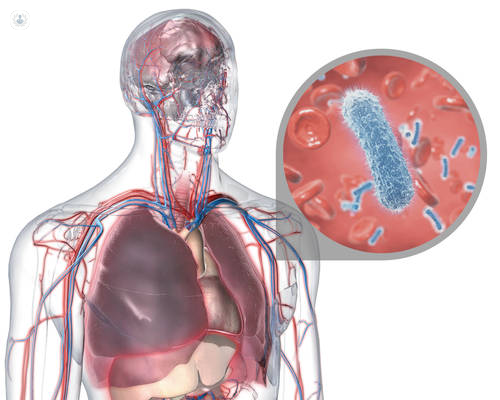


What is septic shock?
Septic shock is a serious illness that occurs when an infection causes dangerously low blood pressure. It can be a life-threatening complication of sepsis, which is when the body has an inflammatory response to an infection, which can cause organ and tissue damage and can lead to organ failure.
Symptoms of septic shock
Sepsis can damage any part of the body, such as the heart, brain, kidneys, liver, and intestines. Symptoms of septic shock may include the following:
- Cold, pale extremities
- Abnormal body temperature, very high or very low, which may be accompanied by chills
- Dizziness
- Decreased or no urge to urinate
- Low blood pressure, especially when standing up
- Palpitations
- Accelerated heart rate
- Agitation, restlessness, confusion or lethargy
- Problems breathing normally
- Change in skin colour or skin rash
- Loss of consciousness
- Nausea
- Vomiting
- Severe muscle pain
Tests for diagnosing septic shock
Firstly, blood tests are performed to check for the following problems:
- Infection
- White blood cell count
- Presence of bacteria or other organisms
- Low of blood oxygen level
- Disturbances of acid-base balance
- Organs do not function properly or their output is reduced
There are also other tests to help the specialist make a correct diagnosis. These are:
- A chest X-ray to identify pneumonia or fluid in the lungs (pulmonary oedema)
- A urine sample to check for infection
What are the causes of septic shock?
Septic shock can be caused by bacterial, fungal and viral infections. Toxins released by bacteria and fungi can lead to tissue damage. The body may become inflamed as a defensive response to toxins that can damage the organs. This can result in low blood pressure, which may lead to the failure of one or more organs. The risk factors for septic shock are as follows:
- Diabetes
- Diseases of the biliary system, the genitourinary system or the digestive system
- Diseases such as AIDS, which weaken the immune system
- Indwelling devices
- Leukaemia
- Long-term use of antibiotics
- Lymphoma
- Recent infection
- Recent surgery or surgical intervention
- Taking steroids
- Organ or bone marrow transplant
Can it be prevented?
In most cases, septic shock cannot be prevented, but treating bacterial infections properly can help manage the disease.
Treatments for septic shock
Septic shock is a medical emergency. Therefore, most people with septic shock are admitted to the hospital intensive care unit (ICU). Treatments include:
- Respirator, with mechanical ventilation
- Dialysis
- Medication to treat low blood pressure, infection, and/or blood clotting
- High volume of fluids given intravenously
- Oxygen
- Sedatives
- Surgery to drain infected areas whenever necessary
- Antibiotics
With haemodynamic monitoring, the pressure of the heart and lungs can be checked. This can only be done with specialised equipment and intensive nursing care.
Which specialist treats it?
Intensive care medicine specialists deal with cases of septic shock.
